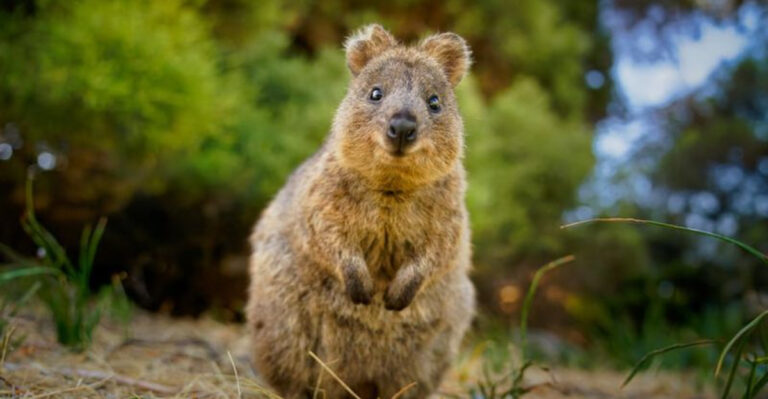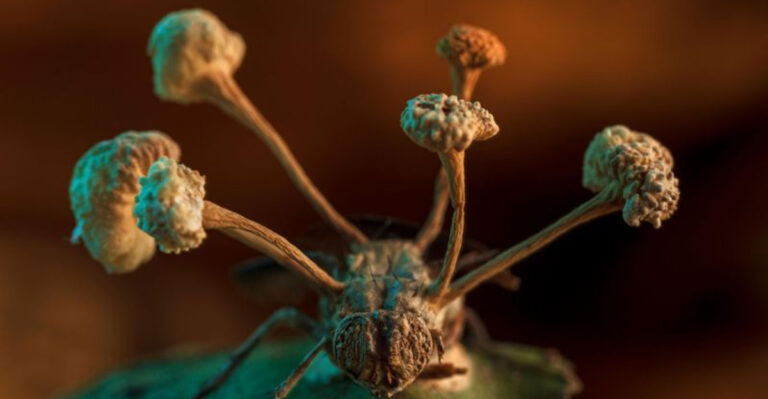14 Farm Birds You’ll Want To Add To Your Flock
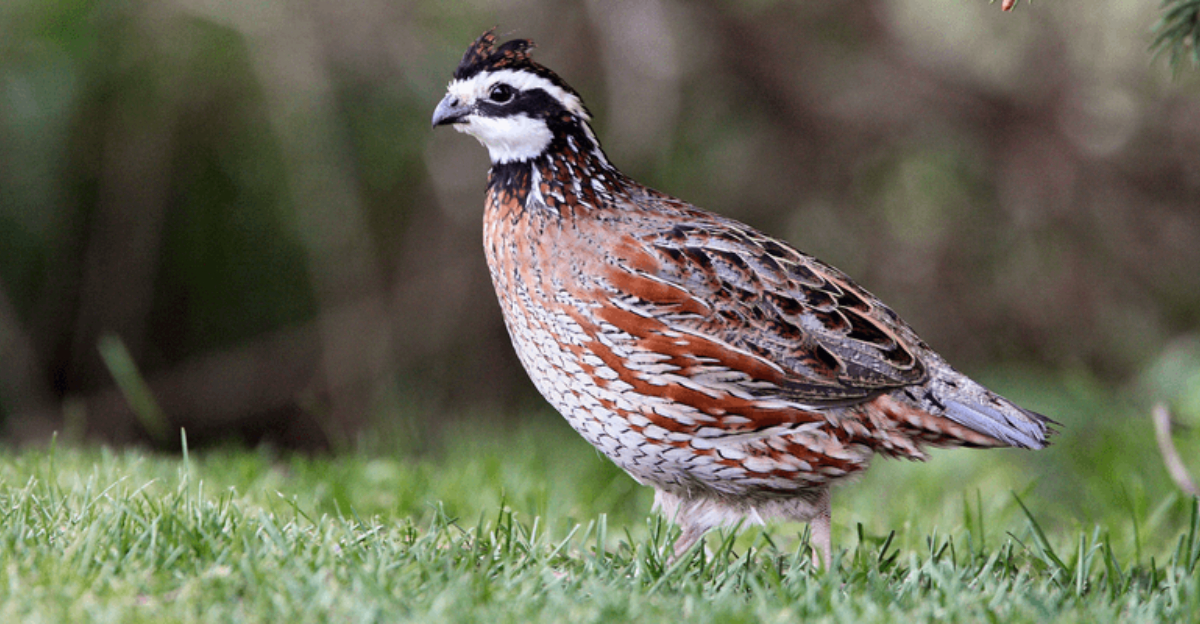
Raising birds on your farm isn’t just about eggs and meat – it’s about creating a vibrant, productive homestead. Different bird species bring unique benefits, from pest control to beautiful plumage.
Whether you’re a seasoned farmer or just starting out, these feathered friends will enhance your farm’s ecosystem while providing fresh food for your table.
1. Chicken (Rhode Island Red)
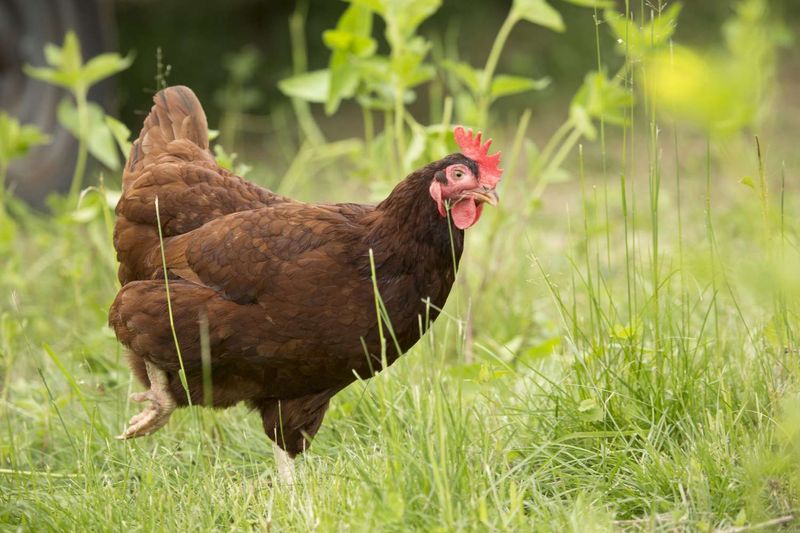
Known as the workhorses of chicken breeds, Rhode Island Reds thrive in nearly any climate. Their rich brown eggs appear in nesting boxes almost daily, making them egg-production champions.
Farm families adore their friendly personalities and intelligence. These russet-feathered beauties adapt well to free-ranging or confinement, perfect for beginners and experienced farmers alike.
2. Chicken (Leghorn)
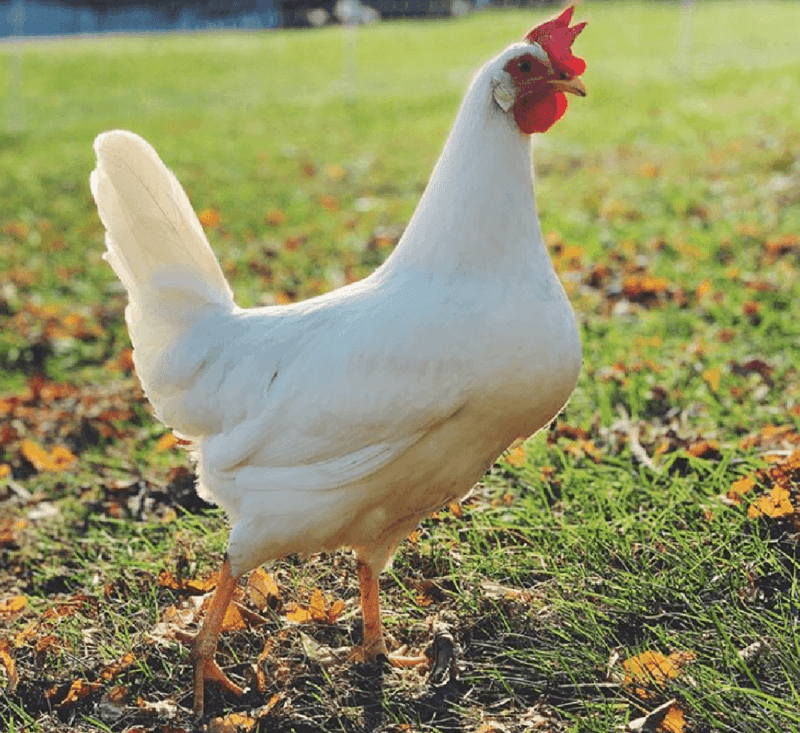
White Leghorns transform feed into eggs more efficiently than almost any other chicken breed. Their bright white eggs stack up quickly – expect around 250-300 annually from each hen!
Alert and active, these Mediterranean natives sport impressive red combs against snow-white feathers. Though somewhat flighty compared to other breeds, their incredible productivity makes them worth every penny of feed.
3. Duck (Pekin)
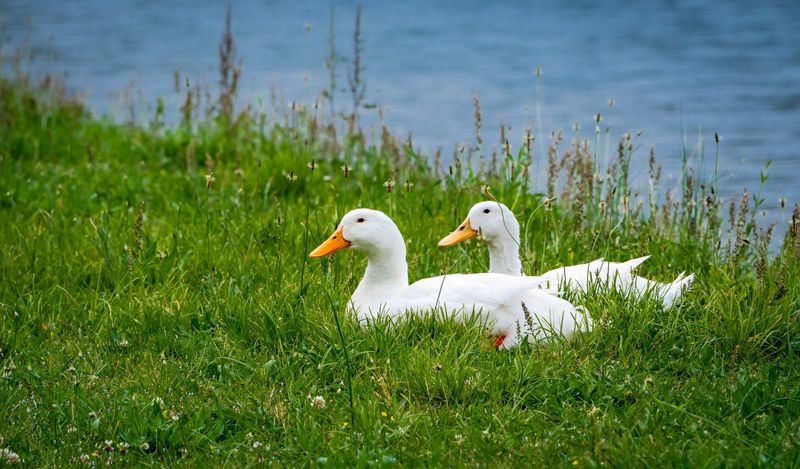
Farmers marvel at how quickly Pekin ducklings transform into market-ready adults – often in just 7-8 weeks! Their snow-white feathers contrast beautifully with bright orange bills and feet.
Beyond meat production, female Pekins lay approximately 200 eggs yearly. Their easy-going temperament makes them a joy to raise, especially for newcomers to waterfowl.
4. Duck (Muscovy)
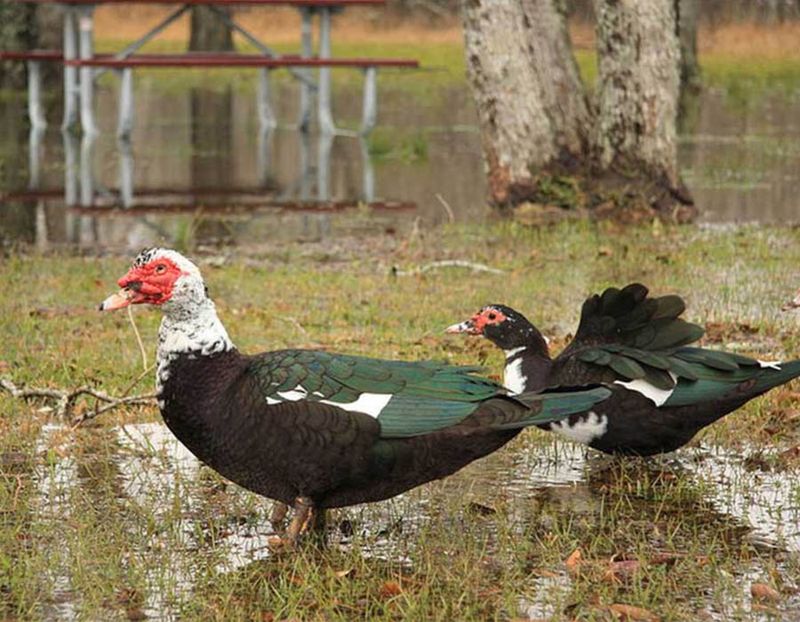
Unlike their quacking cousins, Muscovy ducks communicate with soft hisses and subtle chirps. Their facial caruncles (red warty growths) give them a distinctive, almost prehistoric appearance.
Natural foragers, they’ll happily patrol your property for insects, snails, and weeds. Their self-sufficient nature and lean, flavorful meat make them particularly valuable for sustainable farming practices.
5. Turkey (Broad Breasted White)
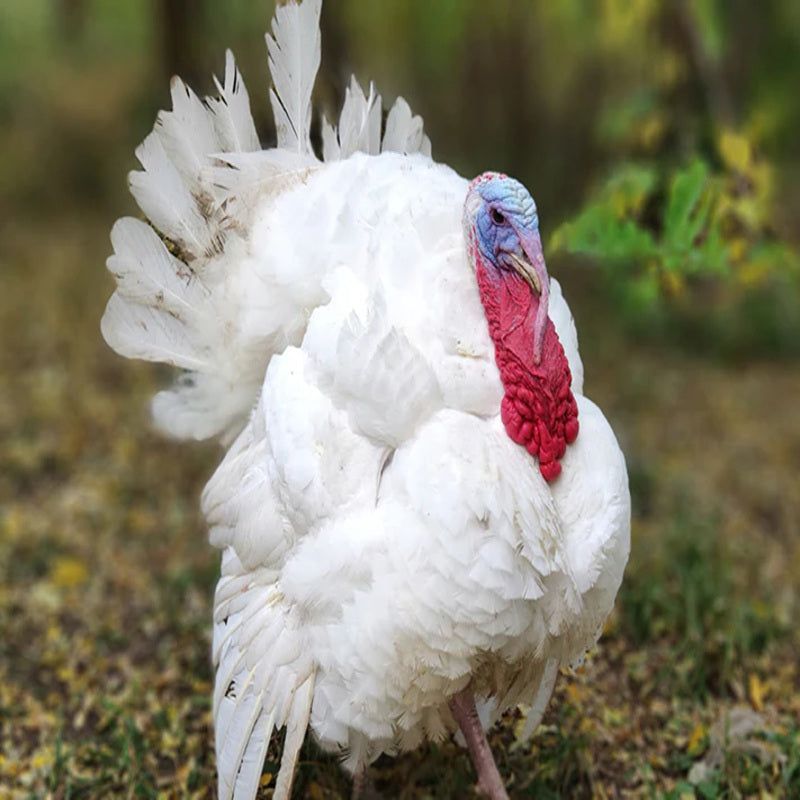
Watching these giants grow is truly impressive – males can reach 40+ pounds in just months! Their pure white feathers ensure clean-looking dressed birds without dark pinfeathers.
Commercial farms favor them for their exceptional feed conversion and broad, meaty breasts. While not as active as heritage breeds, their gentle disposition makes handling these impressive birds surprisingly easy.
6. Turkey (Heritage Breeds, Like Bourbon Red)
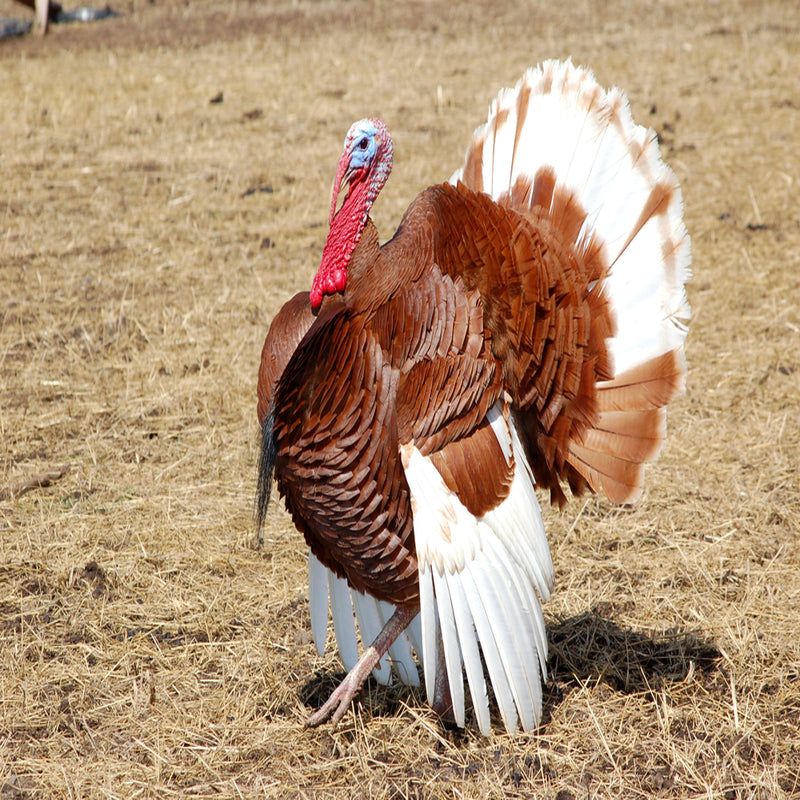
Sporting rich chestnut feathers with white wing and tail bars, Bourbon Reds bring historical beauty to any farm. Their name comes from Bourbon County, Kentucky, where they originated in the late 1800s.
Unlike commercial turkeys, these birds can fly, mate naturally, and forage actively. Their meat develops deep flavor through slower growth, making them sought-after by chefs and food enthusiasts.
7. Goose (Emden)
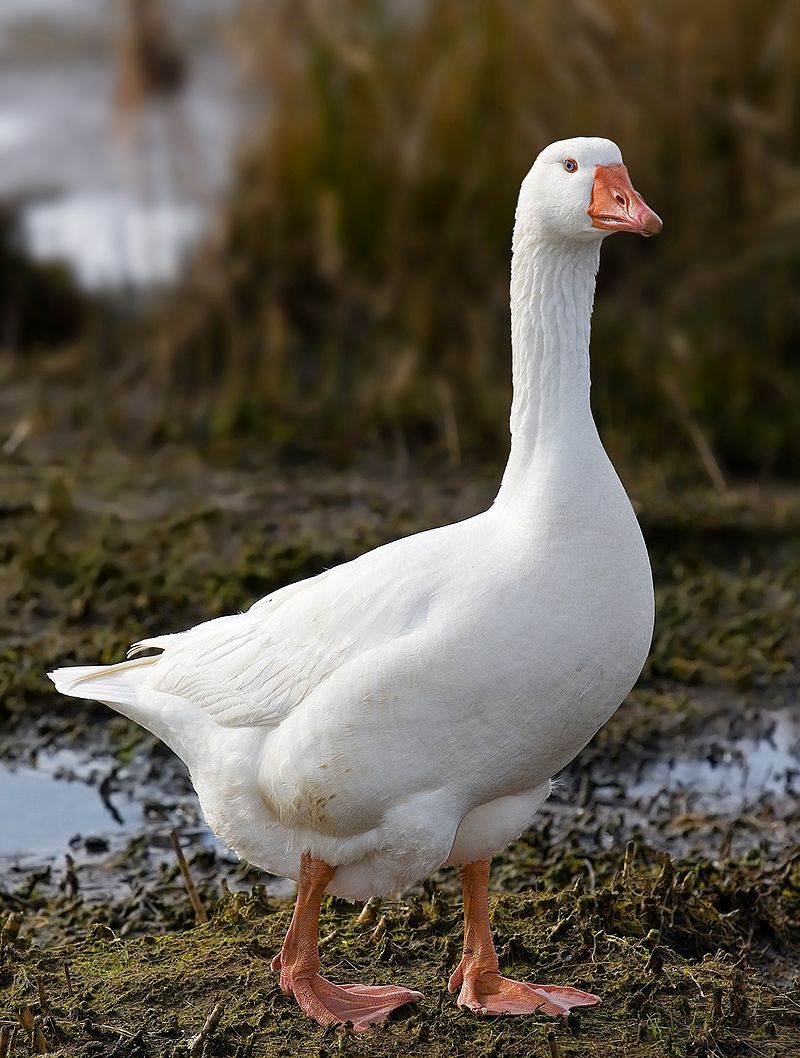
Towering over most farm birds, pure white Emdens command attention with their stately presence. Originally from Germany, they’ve become America’s most popular goose breed for good reason.
Goslings grow rapidly into 20+ pound adults that produce rich, flavorful meat. Despite their size, Emdens typically display surprisingly gentle temperaments, especially when hand-raised from goslings.
8. Goose (Toulouse)
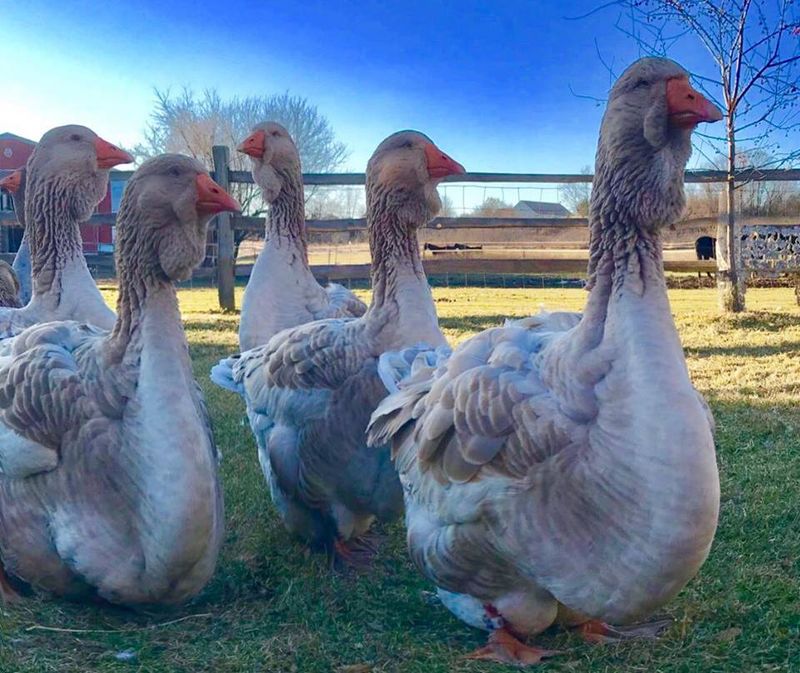
Gray-feathered Toulouse geese waddle about with a distinctive dewlap (fold of skin) hanging beneath their bills. French farmers originally bred them for foie gras production, but they excel as general-purpose farm birds too.
Their calm demeanor makes them less territorial than other geese. Females produce 20-40 eggs annually while males can reach impressive weights of 26+ pounds when fully mature.
9. Quail (Bobwhite)
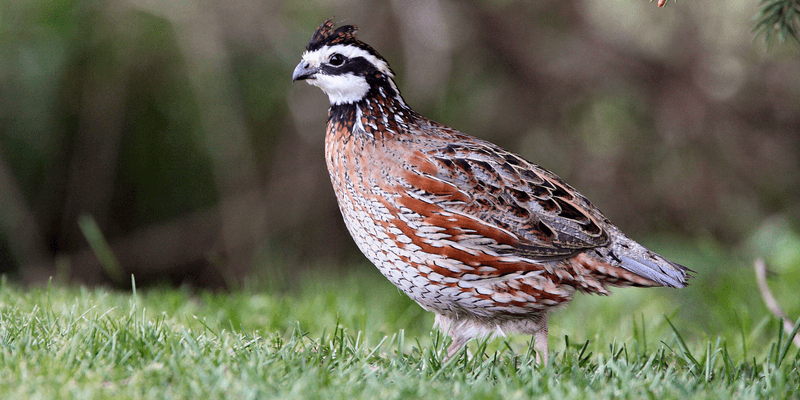
Barely larger than a robin, Bobwhites pack remarkable value into small packages! Named for their distinctive “bob-white” call, these native quail thrive in simple hutches or pens.
Each hen lays approximately 100 speckled eggs yearly. Meat lovers appreciate their delicate game flavor, while wildlife enthusiasts raise them for conservation releases. Their tiny size makes them perfect for limited space situations.
10. Quail (Coturnix)
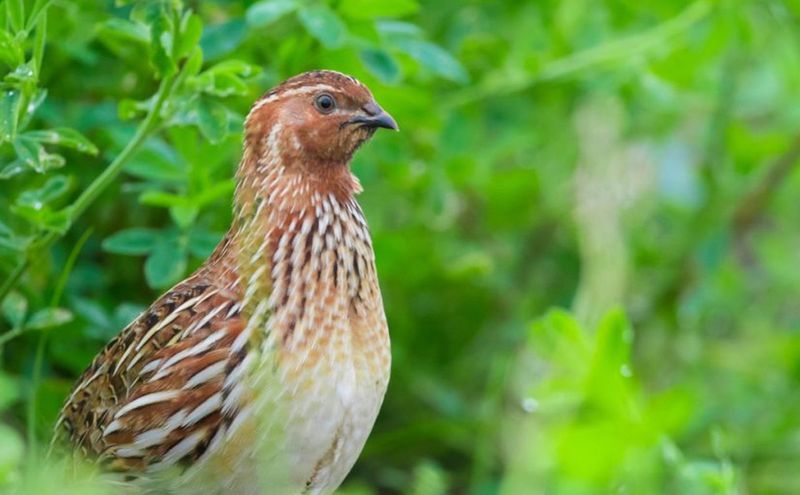
From egg to laying age in just 6-8 weeks, no farm bird matches the Coturnix quail’s rapid lifecycle! Also called Japanese quail, these speckled speedsters mature faster than you can say “egg production.”
Females lay nearly an egg daily despite their tiny size. Their space efficiency amazes farmers – you can house a dozen birds in the footprint needed for a single chicken!
11. Helmeted Guinea Fowl
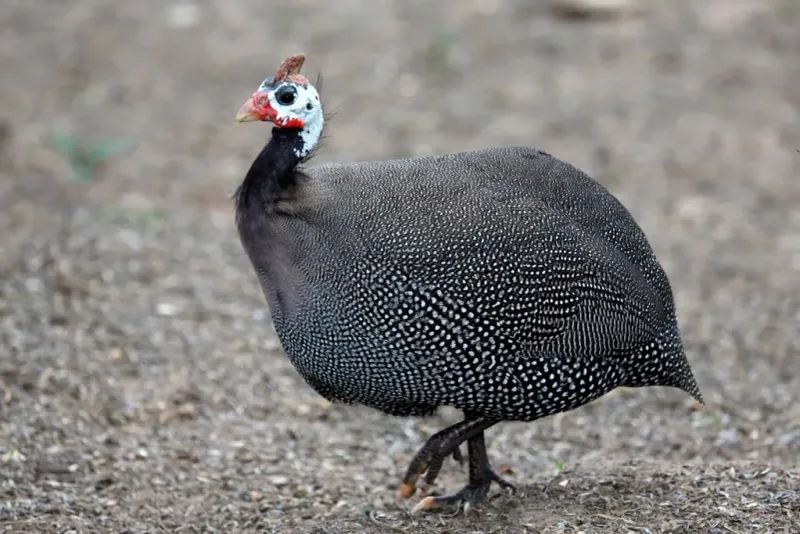
Looking like polka-dotted sentinels, guinea fowl patrol farms with military precision. Their distinctive “chi-chi-chi” alarm calls alert owners to predators, strangers, or anything unusual.
Tick populations disappear where guineas roam freely. Though somewhat noisy, their pest control abilities, tasty eggs, and lean meat more than compensate for their chatty nature. Their spotted “helmeted” appearance makes them instantly recognizable.
12. Violet Guinea Fowl
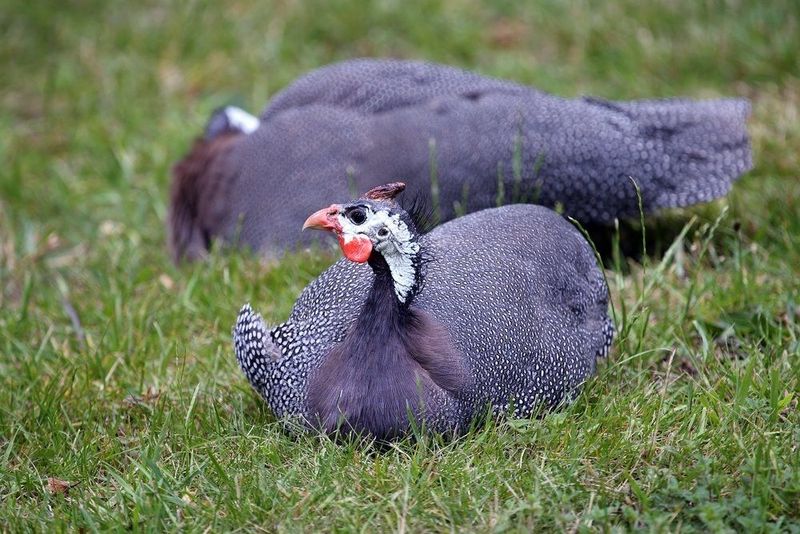
Imagine guinea fowl wearing a royal purple cloak – that’s the stunning Violet variety! Their iridescent plumage shifts between deep violet and blue-black depending on the sunlight.
Like their helmeted cousins, they excel at insect control while adding exotic beauty to your farm. They consume countless grasshoppers, ticks, and even small snakes. Hardy in most climates, they need minimal shelter even in winter.
13. Ringneck Doves
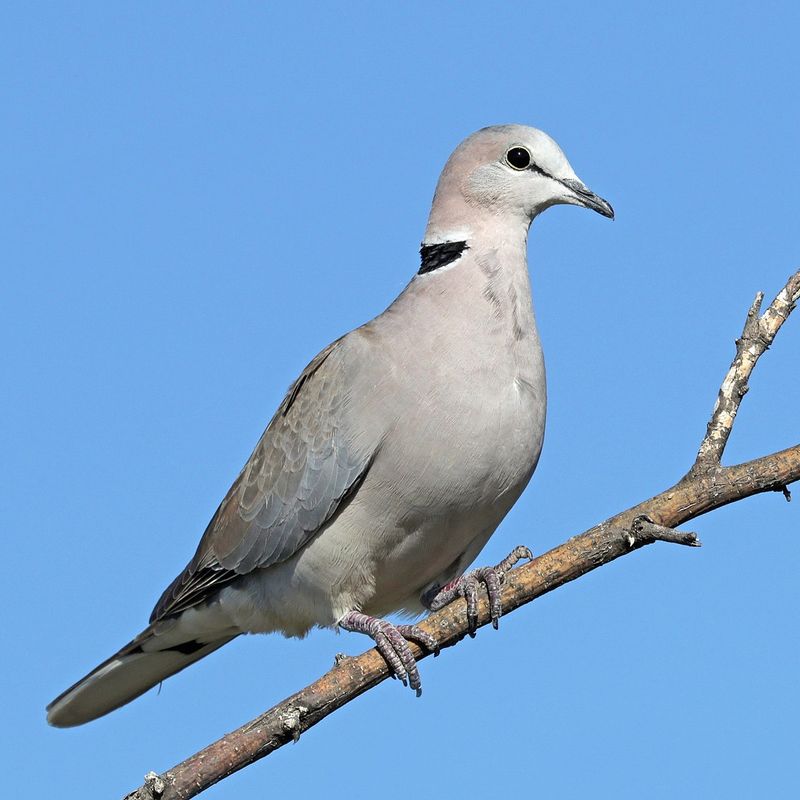
Soft cooing fills your barnyard when ringneck doves join your flock. Their gentle temperament and manageable size make them perfect for smaller homesteads or even urban farming setups.
Breeding pairs bond for life, raising multiple clutches yearly with minimal fuss. Though primarily kept for ornamental purposes, some farms raise them for specialty meat markets. Their peaceful nature makes them wonderful introductory birds for children.
14. Peacocks (Peafowls)
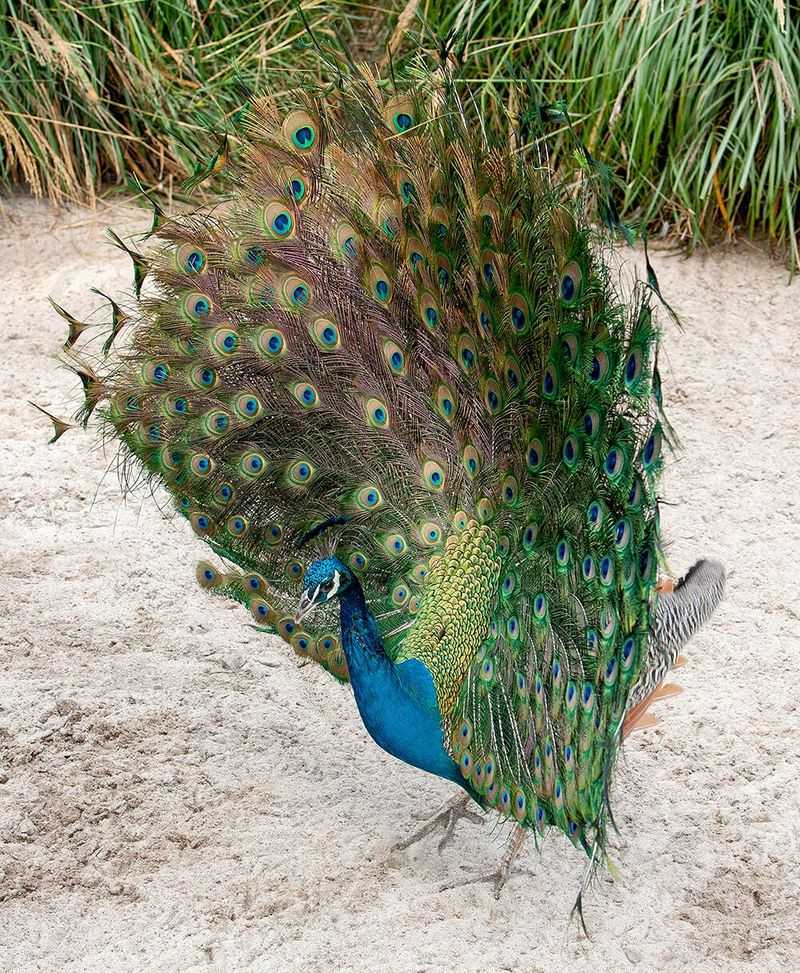
Male peacocks transform ordinary farms into exotic wonderlands when they unfurl their spectacular trains. Each iridescent “eye” in their feathers shimmers with blues, greens, and golds that no photograph truly captures.
Beyond beauty, these birds help control snakes and insects. Their distinctive calls serve as natural alarm systems. Though requiring more space than typical poultry, their ornamental value justifies the extra room.


